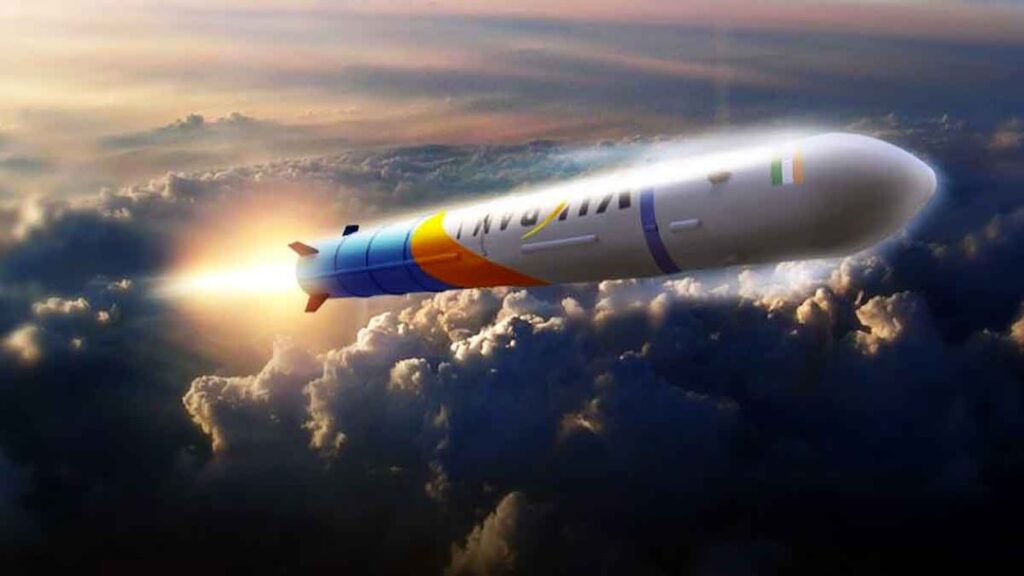India’s first private rocket Vikram’s flight successful, new history begins

For the first time, the rocket Vikram-S made by a private space company in the country was successfully launched. It has taken the Indian Space Program to a different height. A new history was written in the world of space on 18 November 2022 at 11.30 am from the Satish Dhawan Space Center in Sriharikota. The rocket Vikram-S of Hyderabad’s private space company Skyroot Aerospace took off. The rocket went towards space at five times the speed of sound. That is, at hypersonic speed.
Skyroot is a four year old company. Who made the Vikram-S rocket. The Indian Space Research Organization (ISRO) helped in launching it. This mission has been named as Prarambh. Company’s CEO and co-founder Pawan Kumar Chandna that this is a test flight. ISRO had fixed the launch window for its flight.
The name of this rocket has been given after the famous Indian scientist and founder of ISRO, Dr. Vikram Sarabhai. Recently ISRO Chief Dr. Somnath also unveiled the mission patch of the Skyroot company’s mission start. Two indigenous and one foreign payloads are also going on this rocket. This six meter high rocket is the world’s first all composite rocket. It has 3D printed solid thrusters. So that his spin capability can be handled.
https://twitter.com/defencealerts/status/1593485566024515585?ref_src=twsrc%5Etfw%7Ctwcamp%5Etweetembed%7Ctwterm%5E1593485566024515585%7Ctwgr%5E2c0a0d6be2266925bb47e91027c531cae043c981%7Ctwcon%5Es1_c10&ref_url=https%3A%2F%2Fwww.aajtak.in%2Fscience%2Fstory%2Fskyroot-aerospace-vikram-s-india-first-privately-built-rocket-lunch-features-tstr-1578142-2022-11-18
During this flight, the rocket avionics, telemetry, tracking, inertial measurement, global positioning system, onboard camera, data acquisition and power system will be tested. This is a sub-orbital flight. In which Chennai-based space startup SpaceKidz, Andhra Pradesh-based N-SpaceTech and Armenia’s BazoomQ Space Research Lab satellites are going.
https://twitter.com/SkyrootA/status/1593477335248166912?ref_src=twsrc%5Etfw%7Ctwcamp%5Etweetembed%7Ctwterm%5E1593477335248166912%7Ctwgr%5E2c0a0d6be2266925bb47e91027c531cae043c981%7Ctwcon%5Es1_c10&ref_url=https%3A%2F%2Fwww.aajtak.in%2Fscience%2Fstory%2Fskyroot-aerospace-vikram-s-india-first-privately-built-rocket-lunch-features-tstr-1578142-2022-11-18
Pawan Chandna told that Vikram S will fly a sub-orbital flight. Skyroot is the first private space company in the country which has achieved this success. With its success, India will join the world’s leading countries in the case of private space company rocket launching. This rocket is completely made of carbon fiber.
The satellite of SpaceKidz weighs 2.5 kg
To make which the help of children from America, Indonesia, Singapore, Seychelles and India has been taken. This satellite has been made by the children under the guidance of scientists. The name of this satellite is FunSAT. There are more than 80 parts in this satellite.
Rocket has 3D printed cryogenic engine
Vikram-S rocket has 3D printed cryogenic engines. Whose test was done on November 25 last year at the test facility of Solar Industry Limited, Nagpur. Small satellites will be installed in the prescribed orbit of space with this rocket. The weight of this rocket is 545 kg. The diameter is 0.375 m. It flew to a height of 83 to 100 km.
Rocket launching will be 30-40% cheaper
3D cryogenic engine is more reliable than the common cryogenic engine. It is also 30 to 40 percent cheaper. This cryogenic engine will also be used in Vikram-2 and 3. At present, Skyroot has plans to make three types of rockets. The reason for launching Vikram-1, 2 and 3. There is also a change in its fuel. Instead of common fuel, the help of LNG i.e. Liquid Natural Gas and Liquid Oxygen (LoX) has been taken. It is economical and pollution free.
Understand Skyroot Aerospace’s Vikram rocket
The Vikram-1 rocket can place a payload of 225 kg to a SSPO of 500 km altitude or a payload of 315 kg to a Lower Earth Orbit of 500 km. This rocket is made in 24 hours only. The Vikram-2 rocket will place a payload of 410 kg in a SSPO of 500 km and a payload of 520 kg in a Lower Earth Orbit of 500 km. A cryogenic engine will be installed in its upper part. The Vikram-3 rocket will place a payload of 580 kg in a SSPO of 500 km and a payload of 730 kg in a Lower Earth Orbit of 500 km. Both the rockets can be made and launched in 72 hours.







